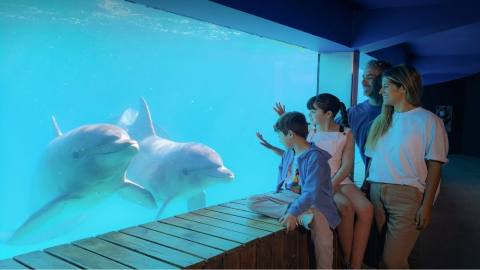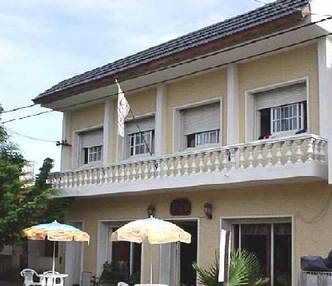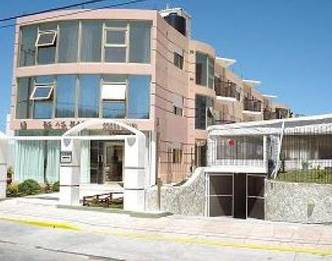A History of Comings and Goings
The famous San Antonio lighthouse was built in the year 1890 and began working on January 1st, 1892. It was built following a French system called “Barnier”, in iron, with the shape of a tripod and a central column. It is 58 meters high. Its main staircase has 298 steps and its light scope reaches 21 nautical miles, which equal almost 38 kilometers. Until 1926, the lighting system would work with kerosene; afterwards, acetylene was used until 1970, and it has operated electrically ever since, rendering services to the Naval Hydrography Service of the Argentinian Navy.
As from 1950, a commission of military studies appeared in the area and established an army team with workers, equipments and camps to begin working on the construction of a submarine naval base. They worked for several years and installed workshops with modern equipment, electrical power plants and a permanent crew of 180 men. The ground was grilled up to a depth of 120 in search for fresh water. Shortly afterwards, a large dredger was installed to give shape to an entrance channel for the base. These works continued until the revolution of 1955 interrupted them. The sheds were unassembled, the machinery was withdrawn and so was the dredger, and most men working in the project settled down in San Clemente.
Punta Rasa: a Lighthouse, Geography and Migratory Birds
Almost simultaneously, 500 meters from the lighthouse, a radar station with great autonomy which would explore the shore to study sand movements was installed. But after several years of activities, the Ministry of Aeronautics retired all its facilities.
A Place in the World
Punta Rasa is one of those few places in the world where a curious phenomenon takes place: the sun rises over the sea and sets behind the river. And all this show may be appreciated from the sand bar that is called Punta Rasa and that gets deep into the water to become the Samborombón Bay in its southern end and Cape San Antonio in its northern end, right where the river gets mingled with the sea.
This place, where the wind blows practically all year round, has the privilege of lodging large concentrations of birds of various species on their migration stop, coming from places in the Northern hemisphere -such as Alaska, Canadá or the Peninsula of El Salvador- in order to rest, put on weight and continue traveling up to Tierra del Fuego, from where they start their flight back when the Fall comes.
Among these birds, plovers, seagulls, swallows, owls, humming-birds, woodpeckers, horneros, fork-tailed flycatchers, mocking-birds, thrushes, blue-and-yellow tanagers, red-crested cardinals and others, which arrive in huge flocks and rest in Punta Rasa before continuing with their extraordinary journey.
Maybe for such reason, it does not sound strange that the Wildlife Foundation has set a biological station next to the San Antonio Lighthouse, which is to study species by means of procedures that imply counting and ringing, as well as to protect this place from the incidence caused by man, sometimes without even noticing.
The ecologist awareness has began to become consolidated in our country and watching these beautiful sea birds may be the starting point for both grown-ups and children to incorporate the values that government policies of each country should foster among their citizens: loving the earth, the air, the sea and the beings that take shelter there.
But beyond the scientific aspects, the presence of groups of up to fifteen hundred birds turns into an unforgettable show that invites us to be one more in the flock and join one of those fascinating flights across thousands of kilometers. A dream of man that will remain alive for good as time goes by.
Pablo Etchevers
Pablo Etchevers



























